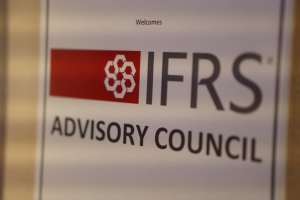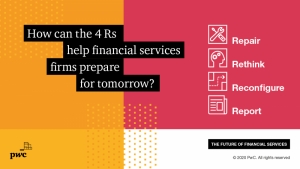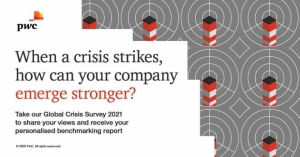عرض العناصر حسب علامة : PwC
الأربعاء, 20 يناير 2021 13:03
فتح الصندوق الأسود للذكاء الاصطناعي
وصف في السبعينيات من القرن الماضي أستاذ الروبوتات في طوكيو ماساهيرو موري، كيف تبدو الآلات أكثر شبهاً بالإنسان
معلومات إضافية
-
المحتوى بالإنجليزية
AI, applied: Opening the black box
By Ranica Arrowsmith
There’s a phrase for the uneasiness many of us feel when confronted with humanlike machines — the Uncanny Valley. Coined in the 1970s by Tokyo robotics professor Masahiro Mori, the phrase describes how as machines appear more humanlike, they become more appealing to humans — but only up to a point. After that, as they appear more humanlike but not quite, they inspire revulsion in the observer.
In the accounting profession, there is a similar uneasiness when dealing with the idea of AI, though it has nothing to with how the software looks. The technology has the potential for high-level automation of processes, ultimately saving a lot of time for the accountant, but with its ability to perform tasks that are traditionally the purview of human beings, does this mean a diminished role for the accountant, or even the loss of jobs?
The good news is, the experts don’t think so.
Justin Adams, whose company Anduin has just launched an AI-enabled accounts receivable platform, insists there is an “art” to billing that must remain in the AR process for it to be meaningful and profitable — the deep knowledge of a client over time, for example, can affect a billing relationship. And Samantha Bowling of Garbelman Winslow CPAs isn’t interested in simply speeding up the audit with AI — she wants to provide an audit of such high quality that it’s unquestionable. These types of service goals can only be achieved by marrying AI with the human professional, with all the professional’s experience, skepticism and emotional intelligence.
Artificial intelligence can have an air of mystery about it, to say nothing of a hint of the unnatural, with something we value as inherently human — intelligence — being created and inserted into something inanimate — a machine.
It makes sense that we feel this way. The programming precursor to what we today call artificial intelligence was neural networks, code that was inspired by and modeled on actual human neural networks in the brain. Today, artificially intelligent programs have the ability to observe patterns and use those to “learn” behaviors and responses, making the technology smarter and more usable over time.
It’s worth bearing in mind the various ways in which AI is already here, working in the background of the accounting and enterprise platforms you know well, automating processes and making software more efficient. All the user sees are the benefits. But the market is now seeing true AI platforms that apply machine learning to entire processes end to end, such as AR/AP. And the common theme among all use cases for such AI-rich platforms is time — the time it takes to adopt the software and to validate it, to train it enough for a firm to realize its benefits. The machine has to learn. This takes an investment both of money and patience, but for the willing, it’s worth it.
Today, artificial intelligence is transforming processes across the accounting profession, for those are ready to invest in and adopt it. It’s not just being practically applied in audit, where AI is being used for data analysis and anomaly detection — we will look at examples of AI transforming AR/AP, as well as explore the implications of AI in sales tax automation.
Accounts: Receivable
Despite … everything about this year, venture capital funding continued on an upward trend in 2020, with the third fiscal quarter bringing in the second highest amount of VC funding per quarter on record. Artificial intelligence is high on the list of hot tech, which makes it no surprise that Anduin was able to obtain seed funding and launch its first AI-powered product suite all during the COVID-19 pandemic.
Anduin co-founders Justin Adams and Pat Morrell have built an AI-driven accounts receivable platform, Intelligence-Based Billing, for accounting firms. The platform launched in December, so it remains to be seen how successful adoption will be, but the pair of entrepreneurs have succeeded before in the AI space. Prior to founding Anduin, Adams and Morrell started, grew and sold a company that made an AI-driven product for the health care space, all within two years. That whirlwind experience propelled them into their current venture, and their success made them attractive prospects for investors.
“We had zero health care background when we started Digitize.AI,” Morrell said. “But we went to CFOs of health care companies and asked them where their biggest pain point was. When they said ‘prior authorizations,’ I had to look it up on Wikipedia — but I knew that a manual process is a manual process, and can be automated.”
Adams and Morrell weren’t quite as clueless entering the accounting space. Adams had spent years working at Big Four firm PwC, first in a consultative capacity and then internally managing technology projects. When they asked accountants what they would change if they could wave a magic wand, accounts receivable was a common answer. The process, managed manually, is scattered and unwieldy, and even streamlined client portals don’t optimize the process for each individual client and their payment habits.
There’s an art to billing, Adams said, and the platform tries to preserve that for the accountant. “Think of it from a client’s perspective,” he said. “There’s tons of friction. It can be confusing. You could have received a service three months earlier, and when you get the invoice, you’re trying to remember what you’re paying for again.”
Intelligence-Based Billing is made up of four modules (which can be bought separately), handling invoicing, collection, payments and internal analytics. The platform automates the invoicing process so bills are sent in a timely manner, but it also learns a client’s payment habits over time. How many emails or messages does it take before an invoice is opened and viewed? How many contacts does it take before a client pays the bill? Each client is different, and therein lies the art. If a client typically pays an invoice after two emails and a phone call, Intelligence-Based Billing will “remember” that over time, optimizing the process for each firm-client relationship.
More “art” that the AI tries to replicate: The analytics feature can be used in part to automate, so to speak, that gut feeling accountants also have to pay attention to when it comes to value-based billing. For instance, Morrell pointed out, a firm may have worked a certain number of hours on a project, but with their sense of the market over the years, they know that a client might expect a certain discount. Each client perceives different aspects of a service as more valuable, and also might need different billing structures to remain a client in the long term. Intelligence-Based Billing pulls and analyzes data from across firm systems to inform this type of decision-making.
“The fundamental pain is the anxiety that firms are leaving money on the table; and that firms don’t have real visibility into their cash flows,” Morrell said. “On the partner level, it’s all about liberating them to focus on complex, creative, value-generating service delivery.”
Intelligence-Based Billing is new on the market, and is signing up “trailblazer firms” now as its first customers. Time will tell how successful it will be, but no matter what, Anduin is part of a small group of innovators bringing fully formed, AI-enabled automation to firms of all sizes, for everyday firm functions, and will help set the stage for what’s to come.
Accounts: Payable
Youngseung Kuk manages business outsourcing services for Top 100 Firm Armanino in Boise, Idaho. This year, Kuk spearheaded the implementation of Vic.ai, a platform that automates the accounts payable process using AI. Using AI to tackle AP for clients was “low-hanging fruit,” Kuk said, as all companies, no matter what type, have bills to pay.
Armanino uses Bill.com firmwide for all AP, so the firm worked with Vic.ai to integrate the software to make the end-to-end AP process more streamlined.
Kuk and his team are validating Vic.ai as they use it, adding clients slowly, one at a time, to make sure they give the program enough time to learn its clients and become highly efficient at its predictions. This is a key part of understanding AI — it takes time.
Software that runs on AI doesn’t operate like the software we’ve become accustomed to. It doesn’t perform an exact set of functions as programmed, and only as programmed. Artificial intelligence learns as it goes, which means that by the end of a certain period of time, the software will operate very differently for each client, each firm, each project.
Kuk estimates it will take Vic.ai three years to predict client behavior and needs at a close-to-perfect rate. The wait is worth it for the sheer amount of time it can give back to an accountant once the AP process for a client is basically fully automated.
Armanino has one client, a law firm, that has highly repetitive bills that don’t have too many complicated dimensions (i.e., company name, address, and so on, are usually in the same spot on the invoices). Within a few months of use, Vic.ai can now predict any given AP workflow for that client with about 80 percent accuracy. If this is true for this client, Kuk said, that’s enough to know it’s possible for the others. Currently, Armanino has 46 clients on Vic.ai, and plans to keep validating the software so it can add more in time.
“The time spent validating is worth it, because by the end, as a firm, we’re going to be so much more scalable,” Kuk said. “Once you free up some capacity, even just from an AP standpoint we can do a number of different things for our clients that add more value, like confirming all vendors have W-9s, for example, or reaching out to vendors proactively if they haven’t accepted an ACH payment. These are just some basic examples, but I think we’re at the tip of the iceberg and nowhere near the full potential of AI.”
“Two years ago, we made an investment in artificial intelligence in a big way. It became part of firmwide strategy,” explained Tom Mescall, partner-in-charge of consulting at the firm. “Most CEOs, CFOs and business operators know the headline of AI, but they don’t know how to apply it in a business setting. We’ve done a lot of work around demystifying AI and bringing real-world examples to light for clients.”
A relevant audit
Firms have been using AI products for anomaly detection and analytics in audit for a few years now. Companies like MindBridge AI came on the scene and started to show the profession the real-world implications of being able to read every piece of data in minutes, as opposed to just sampling data. Samantha Bowling, a partner at Garbelman Winslow CPAs, saw the opportunity in MindBridge AI three years ago, and brought the technology to her firm.
In 2017, while Bowling served on the Governing Council for the American Institute of CPAs, she listened to president and CEO Barry Melancon describe how Big Four firm KPMG was investing millions of dollars into AI-driven audit technology.
“He was talking about how they were going to take over the world,” Bowling recalled. “As a small-firm audit partner, I was concerned, because if the big firms are doing something, sometimes it doesn’t become available to us for a while, or ever. I was actually concerned about eventually having to find a new revenue source.”
She called her existing audit software provider and asked explicitly if they had plans to embed AI into their platform. They didn’t. So Bowling did some online research and found MindBridge AI.
Bowling says that Garbelman Winslow is still in the adoption phase of MindBridge. As is true with the other technologies featured here, there is no substitute for time to allow an artificial intelligence platform to live up to its true potential. She started by engaging MindBridge for just one audit, and then grew usage from there. It helped when MindBridge integrated with QuickBooks, which made data transfers easier.
The biggest benefit of applying artificial intelligence to audit, for Bowling, is the risk analysis.
“Now that there is a direct link between QuickBooks Online and MindBridge, it automatically connects and does the risk analysis,” Bowling said. “I used to think MindBridge was an audit stamping tool that looked at transactions and identified anomalies, directing our attention and telling us where to look. But I realized it’s actually a great risk assessment tool in the very beginning of an audit.”
Bowling explained that while audits are based in risk assessment, a lot of the time, auditors have no idea where the risk is. “We only have our professional skepticism — there’s no one to tell us the risk is in revenue or payroll,” she said. “Now we have something that tells us where it is at the outset. Audit assertions are built into it.”
But there is friction in adoption. Not every client is easy to work with in MindBridge. There is still a lot of manual work to be done to transfer data that is not in the cloud, for instance, to MindBridge AI’s platform.
“Everyone just wants it to be an easy thing — to upload the general ledger and get going — but I think they’d be remiss not to do this with at least one client, or start with their cloud-based clients first before going to challenging clients,” Bowling said. “People are looking for faster, better ways, but I went into this not to do a faster audit but a relevant audit.”
Bowling received CPA.com’s Innovative Practitioner Award in 2018 for her work bringing AI to Garbelman Winslow CPAs. She won in part for the fact that it is small business and nonprofit clients to which she is bringing AI-enabled services, which also has the side benefit of Bowling being able to pass the cost of using MindBridge to her clients by folding it into the billing package. Nonprofit clients don’t mind paying top dollar for service that guarantees an accurate risk assessment.
“Nonprofit clients don’t care about us passing the fee onto them to minimize risk as much as we do, because nonprofit board members are just worried about someone doing something wrong with the money and it being in the newspaper,” Bowling said. “So they’re happy to have a very good audit done, and pay for it.”
Every transaction in the world
When thinking about the application for artificial intelligence in tax, often we think about tax preparation, since there is a lot of room to automate it. In fact, Samantha Bowling said that if she could apply AI to any other service area at her firm, it would be tax: “The current process, with a mix of paper documents and e-returns, is asinine,” she said. “I can’t wait till the whole process is 100 percent automated.”
AI-related innovation in tax prep is moving slowly, although the Internal Revenue Service has started to use the technology in different capacities to detect tax evasion and other types of noncompliance. But of course, there are other areas of tax that are ripe for disruption with AI, and sales tax automation is one.
One of the companies working in this area, Avalara, has made investments in AI in recent years, one of which was acquiring Indix in 2019. Indix was based on an idea that founder Sanjay Parthasarathy had for creating a comprehensive index of retail product information online using artificial intelligence to aggregate the data. (The aggregator was built in layers, with a Google web crawler grabbing information from all over the internet, and then various smart algorithms working together to curate and organize that data.)
Brands and retailers could buy access to this database of information on mostly retail, but also some business-to-business, products, to enrich their catalogs, benchmark against competitors, and so on. Basically, Indix was built as a neutral aggregator of e-commerce inventory.
And now, Avalara owns that AI-built index of more than 4 billion products. This means that Avalara can fold categorization data for much of the world’s online inventory of products in with its tax content database, which includes international product codes and classifications; taxability rules; exemption conditions; tax holidays; jurisdictions; boundaries; tax rates; thresholds and registration, compliance, and return preparation and filing requirements.
If this list sounds daunting, that’s kind of the point: Avalara’s mission is to “to be a part of every transaction in the world.” Without AI enabling at least some of this technology, this would be an impossible goal.
“When you buy a tax compliance product or suite, you want to be able to start using it tomorrow,” said Parthasarathy, who now serves as chief product officer for Avalara. “However, you know that before you can use an automated system, you have to make sure the tax nexus is right, the catalog is mapped to the tax code, a set of things that take time and research. If you want to start selling internationally, and you therefore need to start using harmonized tax codes — if it’s going to take nine months to do it, that’s lost value. We can get you going right away.”
Before Parthasarathy founded Indix, he spent almost two decades at Microsoft. He ended his career there in 2009 as corporate vice president of the Startup Business Accelerator program, a program he created; and he was director of Bill Gates’ 1997 trip to India, which led to a significant investment in that country by the software giant.
When talking about historical AI, Parthasarathy will sometimes use the term neural networks, which are indeed the statistical model programs ancestor to what we call AI today. His knowledge of AI is deep and historical, from having spent so many years helping build one of the most innovative companies in recent history. From his vantage point, he sees both the immense possibilities of AI, as well as the risks.
“There are risks in tax — compliance has potential penalties if done incorrectly,” he commented. “You’re doing it on behalf of somebody, so you want to make sure it is accurate and appropriate. You probably want actual people to keep an eye on it, rather than let AI run everything, even if one day it can. There is an ethical risk — when you have all this data, what is the responsibility of the government and companies to treat it as private data?”
نشر في
تكنولوجيا المعلومات
الأربعاء, 13 يناير 2021 12:23
اثبت حياتك المهنية في المستقبل بمهارات تحليل البيانات
ليس من الغريب أن تكون التكنولوجيا والبيانات الضخمة منتشرة في كل مكان في العمليات اليومية لمعظم الأنشطة التجارية
معلومات إضافية
-
المحتوى بالإنجليزية
Future-proof your career with data analytics skills
By Jack Castonguay
It’s no surprise that technology and big data have become ubiquitous in the day-to-day operations of most businesses, regardless of size or industry. Data scientists, data analysts, and non-IT professionals with data analytics knowledge have become critical in their organizations’ quest to transform raw data into workable and actionable formats that can be used to identify trends, draw meaningful conclusions, and model future outcomes.
As the proliferation of data analytics has expanded, public accountants have found themselves in front of a unique opportunity that allows them to set themselves apart from their colleagues and future-proof their careers by developing their expertise in data analytics — an expertise that will ultimately save their clients time and money.
What is data analytics?
Simply put, data analytics is the process of collecting, inspecting, organizing, and transforming data to identify useful information that informs decision-making. It’s more than a tool or input — it’s a process that, when utilized correctly, provides a 360-degree view of the problem being solved, allowing decision-makers to make the best decision with the best information available.
Specifically, accountants use data analytics to help businesses uncover valuable insights within their financial statements, reduce costs, identify process improvements that increase their efficiency, and better manage risks.
Prior to the growth in data analytics, enabling a business or clients to reach their goals has been a manual and time-consuming process based predominantly on institutional knowledge and relationships. By understanding and mastering data analytics, accountants can future-proofing their career, expediting the learning curve, regardless of the career path they choose.
Professionals in public accounting can use these analytical skills to make sense of the massive quantities of financial information available to evaluate business performance, identify and manage risk, and analyze customer behavior to anticipate market trends more efficiently and accurately than ever before.
These skills are not going away anytime soon - and ultimately, the most efficient firm or advisor will win the business. Enhancing their skills in data analytics will only increase an accountant’s chance of success, and ensure their career thrives into the future.
As this knowledge and awareness of its benefits proliferate, firms and companies will look to hire those with this in-demand skill set — complementing and enhancing the traditional accounting education and experience. Public accountants can move to the top of the resume stack with this skill set, while genuinely putting themselves in a position to better serve their clients and complete their job.
Without this knowledge, professionals will quickly see their business and promotional path suffering — as clients seek the most efficient route and opt for their competitors who are able to streamline manual tasks and identify new relations, all while saving them money.
A PwC report, “Data Driven: What Students Need to Succeed in a Rapidly Changing Business World,” helps to encapsulate the important data analytics-related skills that accounting professionals, such as public accountants, should have. They include:
The ability to consider new sources of data and research and identify anomalies and risk factors in the data.
The ability to use exploratory multivariate statistics, inferential statistics, visualization tools, optimization methods, machine learning, and predictive analysis tools.
The ability to understand relational and nonrelational databases and combine multiple datasets from each.
The ability to use simple vendor risk dashboards and filters to minimize inefficiencies and human error.
The ability to perform data and process mapping from a regulatory and risk-assurance view.
The ability to identify and frame key management decisions and their related metrics to make business solutions more effective and efficient.
Building a skillset
While the reason accountants need skills in data analytics might be clear by now, the how likely isn’t. Juggling important professional development while working can be tough — but it’s absolutely possible and essential to continue advancing in your career.
For me, gaining these skills, I practiced the following:
Take breaks and inform your friends and family. When students study for the CPA Exam, I always encourage them to tell their loved ones what they’re doing, because juggling studying with a job and other day-to-day responsibilities can be exhausting, and having support is hugely important. This tip is just as relevant when upskilling. Remembering to take breaks is necessary - data analytics skills are a fantastic asset, but only if you’re not too burned out to use them.
Use a data analytics course. Much like any other skill or subject, if you study piecemeal or without structure, it will be difficult to retain and organize the information. Using a course, ideally one for accounting professionals, is crucial to ensuring that the knowledge you gain is relevant and that you understand and can apply it correctly.
Know how to showcase these skills after achieving them. While obtaining these skills can be fairly simple when using one of the many online resources available, it’s important that you know how to showcase them and promote yourself once you have upskilled. Finding a data analytics course that offers a certificate upon completion and LinkedIn badges can be a great way to highlight your accomplishments and increase your chance of promotion or transitioning to your next role.
As data analytics and its importance to entities of all sizes continue to grow, it becomes a higher priority for hiring managers and company owners when looking to hire or promote. As the accounting profession continues to evolve to include workers with atypical backgrounds, it is clear that those professionals who are dedicated to upskilling and fine-tuning their professional skill set will succeed in the long-term.
نشر في
موضوعات متنوعة
الأحد, 03 يناير 2021 12:37
ضمان تكافؤ الفرص في الوصول الرقمي للشباب
في الاستبيان السنوي الثالث والعشرون للرؤساء التنفيذيين العالمي لشركة PwC، والذي تم إجراؤه قبل جائحة COVID-19 ، قال 74 بالمائة من الرؤساء التنفيذيين إنهم قلقون بشأن توفر المهارات الأساسية
معلومات إضافية
-
المحتوى بالإنجليزية
Case for change: Ensuring equal opportunity digital access for global youth
by Bob Moritz and Henrietta Fore
In PwC’s 23rd Annual Global CEO Survey, which was undertaken before the COVID-19 pandemic, 74 percent of CEOs said they were worried about the availability of key skills. At the same time, we know that many of today’s youth — the people who will become our employees, customers, and, ultimately, our successors — aren’t getting the access to digital technologies and skills that enable them to thrive.
When schools around the world closed due to the pandemic, one in three young people — some 463 million — lost their only avenue for learning. According to a May 2020 surveyPDF by the International Labour Organization, approximately 90 percent of technical and vocational education and training centers in 126 countries reported complete closure. And more than 40 percent of employed youth were working in sectors hit hard by COVID-19PDF. More than ever, it is imperative that we take steps to close the youth digital divide.
The pandemic has accelerated existing trends and exposed, in a stark light, structural weaknesses in institutions and economies. Inequalities are rising at alarming rates for the most vulnerable in every society, particularly for the unconnected half of the world. As more facets of everyday life become increasingly digital — including education, work, healthcare, news, leisure — youth who are excluded from the digital world will almost certainly suffer long-term or permanent social and economic disenfranchisement. Unless we take action.
This is a moment to turn a crisis into an opportunity — not only to address the economic and social impacts wrought by the pandemic, but to rebound in a way that reverses long-standing challenges and puts youth on a more equal future footing. At the same time, we can also improve the economic fitness of societies at large, giving millions of workers the skills and resources necessary to participate fully in a society and economy that are increasingly digital. To achieve these ambitious goals, however, stakeholders — including businesses — will have to think differently about the roles they play.
As Stepping forward: Connecting today’s youth to the digital future, a report written by our colleagues at PwC and UNICEF, notes, there are four stepping stones that put disenfranchised youth, and thus society as a whole, on the road to a better future.
• Connectivity. The technical elements that allow youth to get online and access the internet and digital platforms: reliable power, digital infrastructure, and devices such as computers, mobile phones, and routers.
• Access. The non-technical elements that allow youth to take advantage of opportunities once they’re connected. These include cultural acceptance of online activity, family engagement and support, native-language content, wellness and emotional resources, and mental healthcare.
https://www.strategy-business.com/article/Case-for-change-Ensuring-equal-opportunity-digital-access-for-global-youth?gko=eca1d
نشر في
تكنولوجيا المعلومات
موسومة تحت
الأربعاء, 21 سبتمبر 2022 11:08
شارك في استبيان خدمات الشركات العائلية
استبيان PwC’s 10th Global Family Business الذي تم إعداده بالتعاون مع Family Business Network International
نشر في
موضوعات متنوعة
موسومة تحت
الأربعاء, 21 سبتمبر 2022 10:15
يعلن أمناء مؤسسة المعايير الدولية لإعداد التقارير المالية (IFRS) عن التعيينات الجديدة في المجلس الاستشاري
يعلن أمناء مؤسسة المعايير الدولية لإعداد التقارير المالية (IFRS) عن التعيينات في المجلس الاستشاري للمعايير الدولية لإعداد التقارير المالية اعتبارًا من عام 2021
نشر في
موضوعات متنوعة
موسومة تحت
الثلاثاء, 17 نوفمبر 2020 12:18
السيدة آنا ماريا إلوريتا من الأرجنتين تنال جائزة القيادة العالمية من الاتحاد الدولي للمحاسبين
منح الاتحاد الدولي للمحاسبين (IFAC) جائزة القيادة العالمية للاتحاد الدولي للمحاسبين لعام 2020 تكريماً لروبرت سيمبير للسيدة آنا
نشر في
موضوعات متنوعة
الأحد, 08 نوفمبر 2020 11:15
التدقيق أثناء الجائحة
نشر في
موضوعات متنوعة
الأربعاء, 14 أكتوبر 2020 13:56
استبيان الأزمة العالمية لعام 2021 الذي تجريه شركة PWC
نشر في
موضوعات متنوعة
موسومة تحت
الأربعاء, 21 سبتمبر 2022 09:24
الشركات الأربع الكبرى تطلق مقاييس تقارير ESG مع المنتدى الاقتصادي العالمي
نشر في
موضوعات متنوعة










